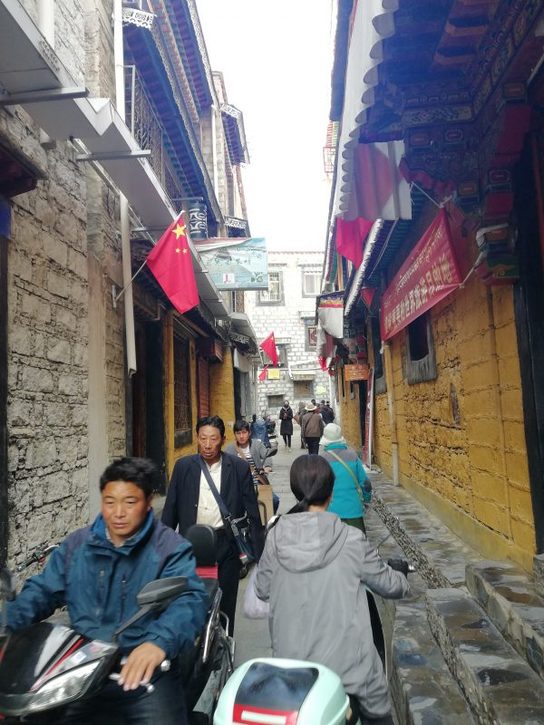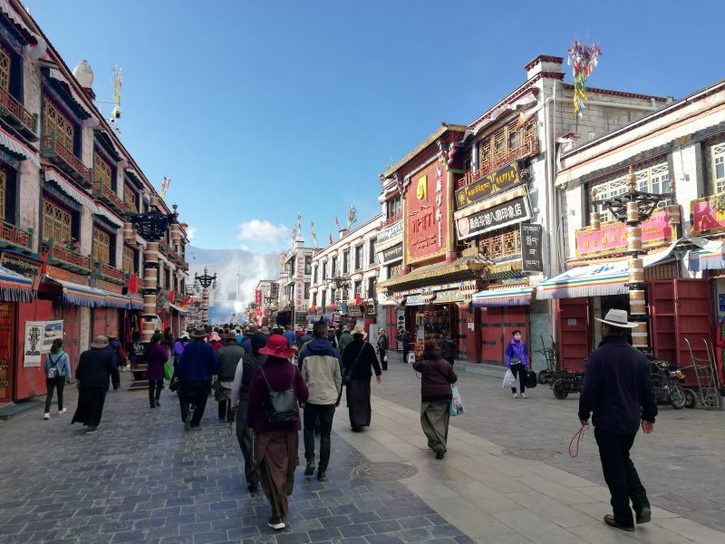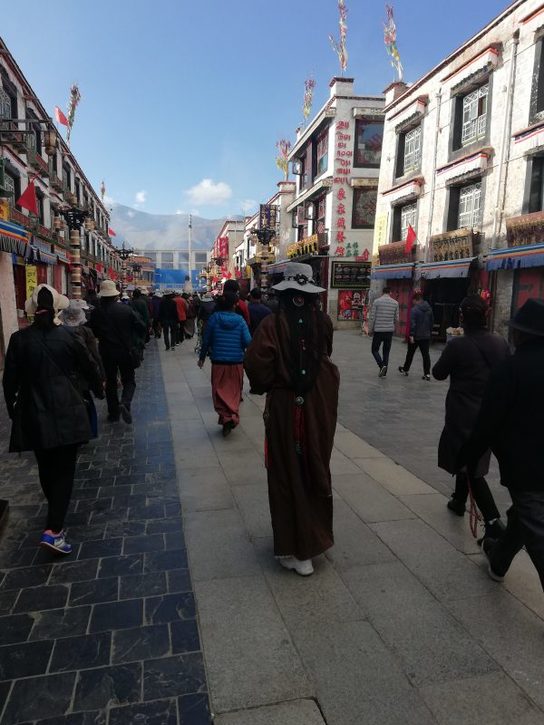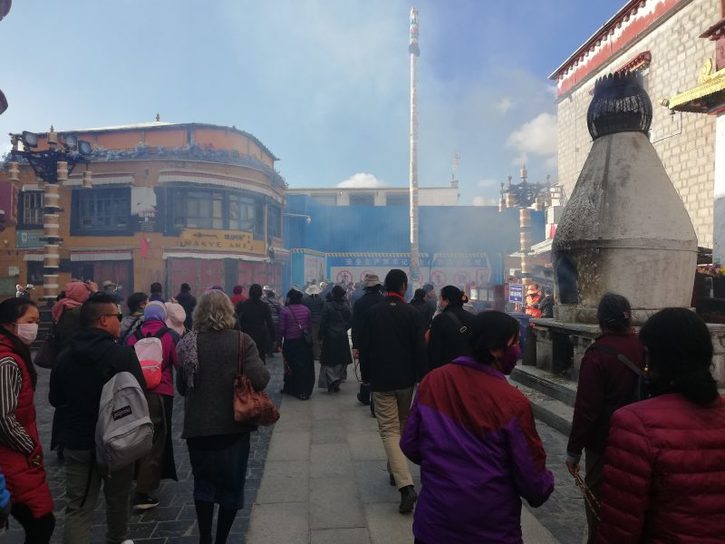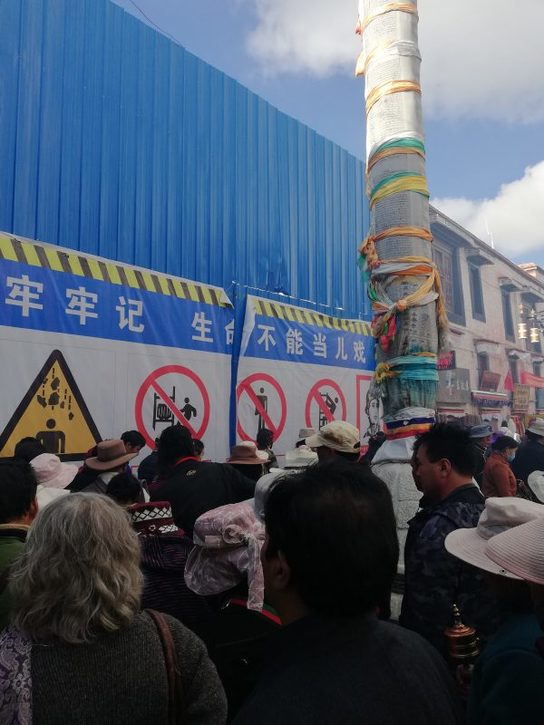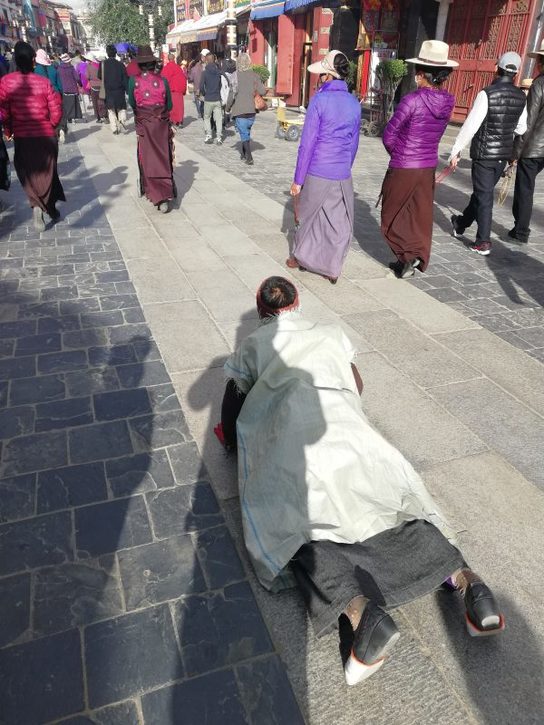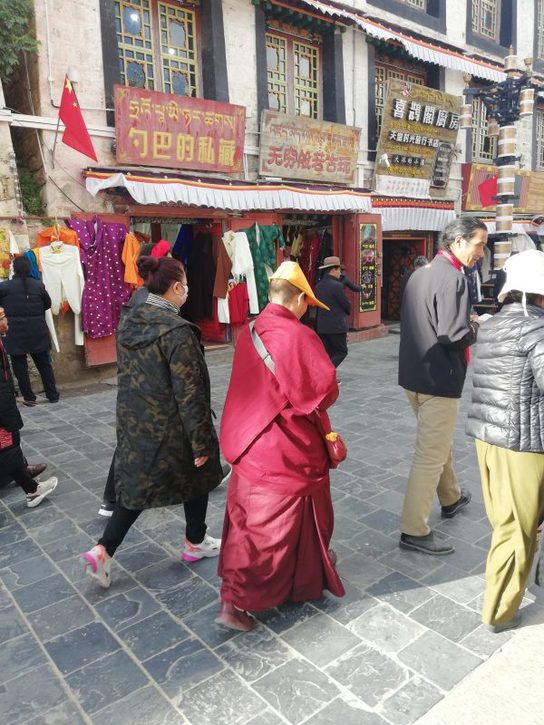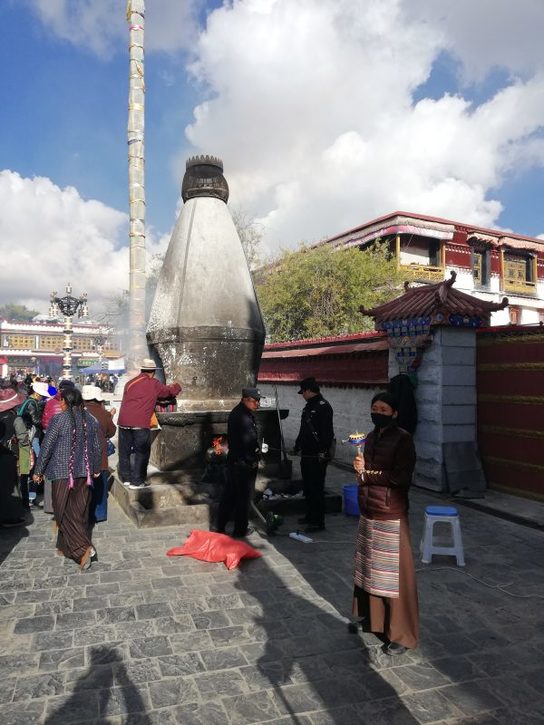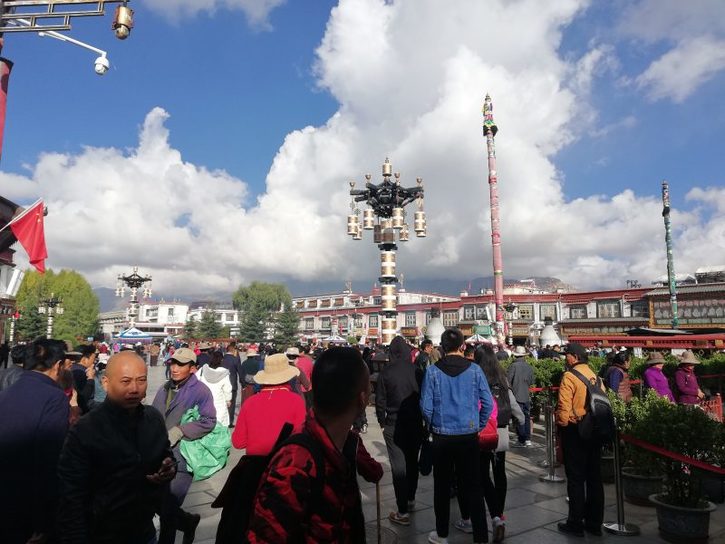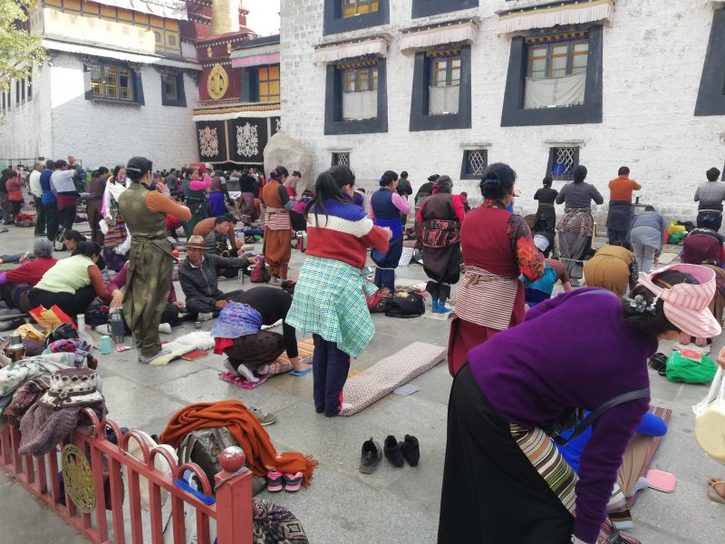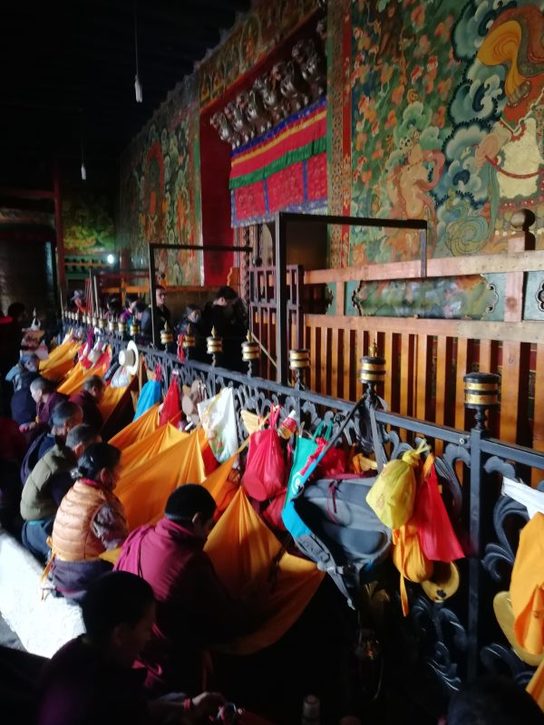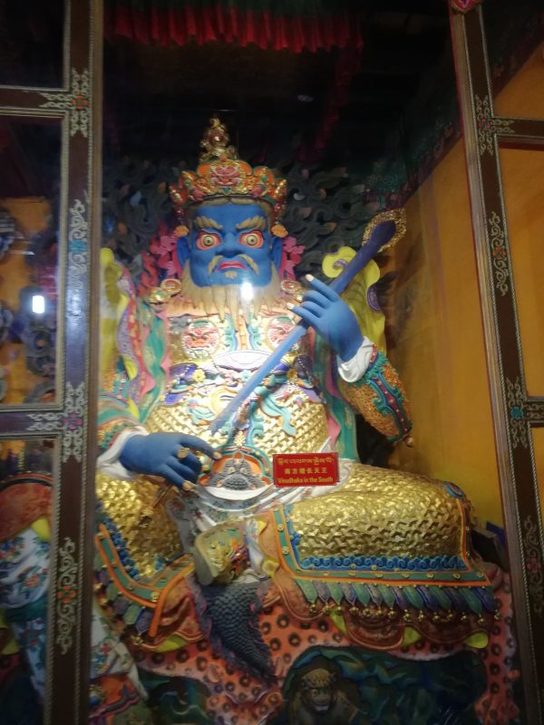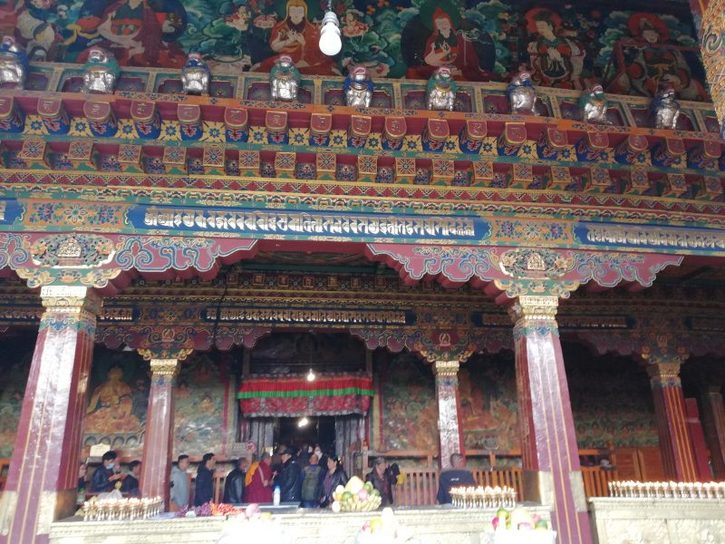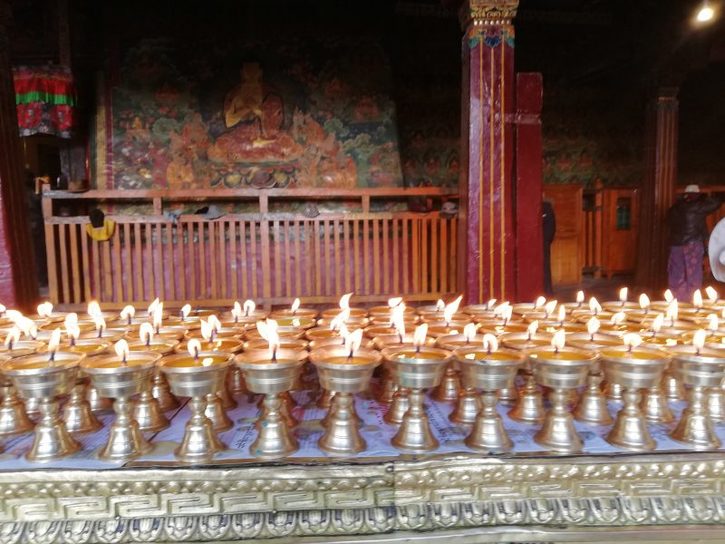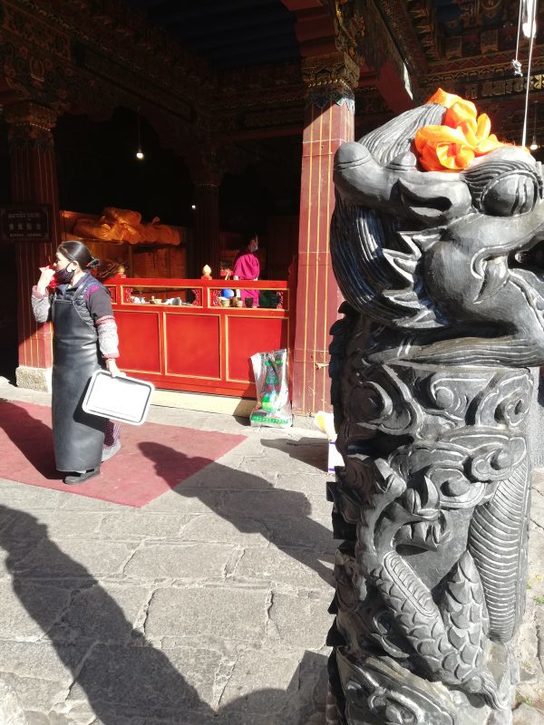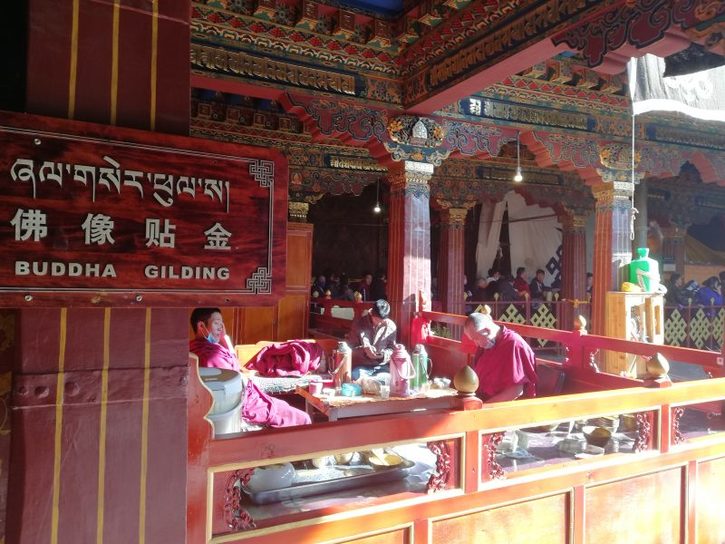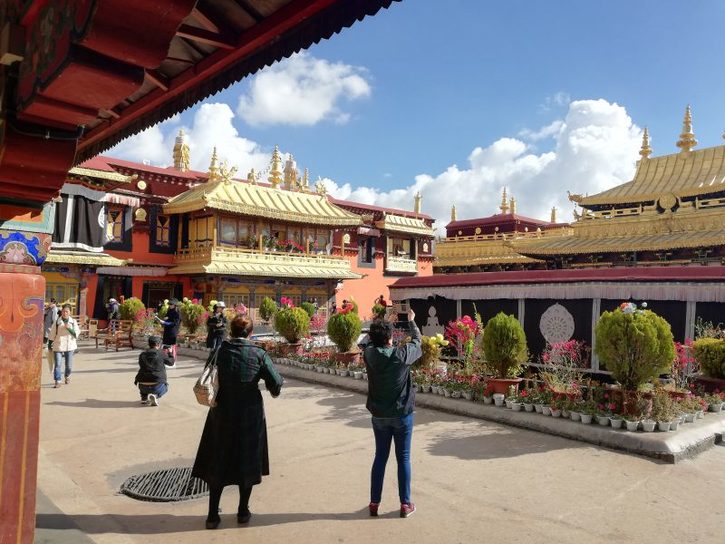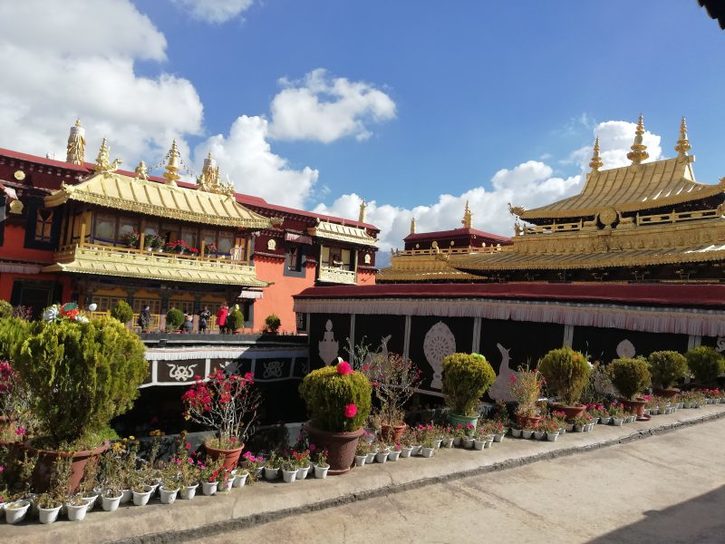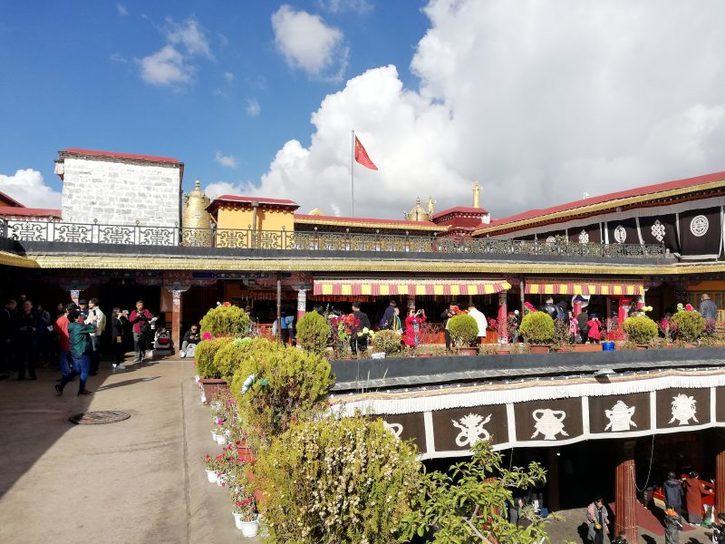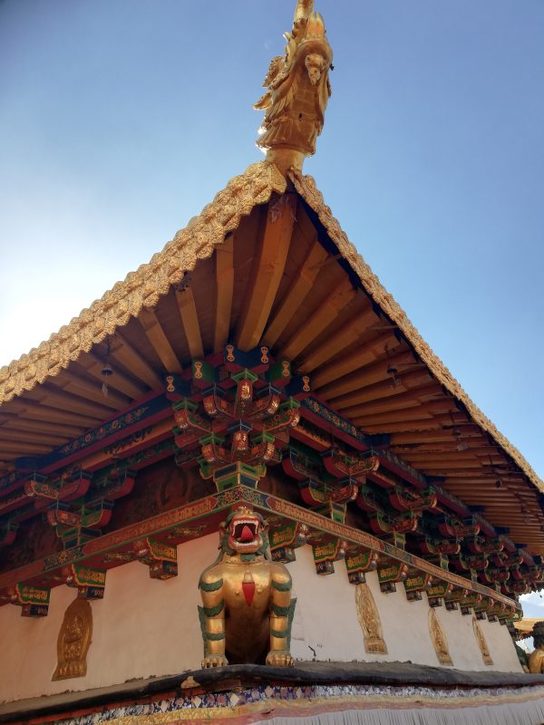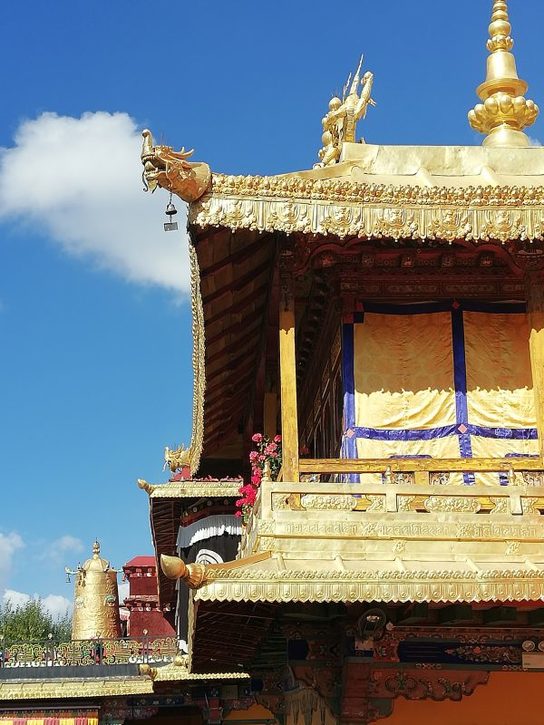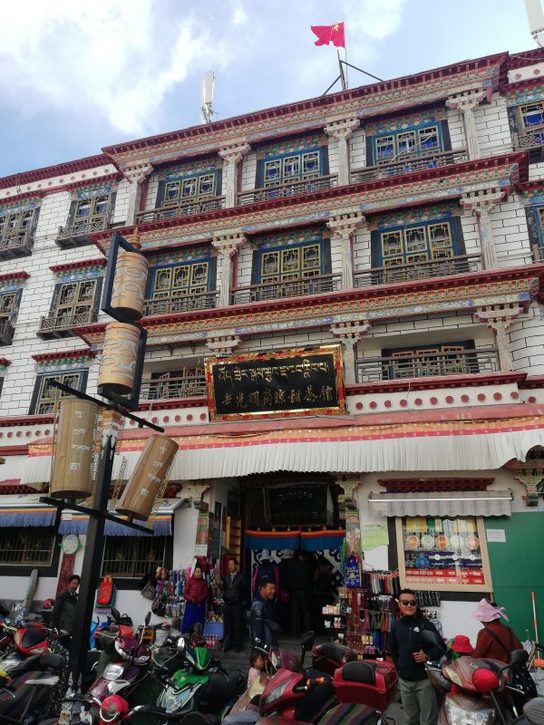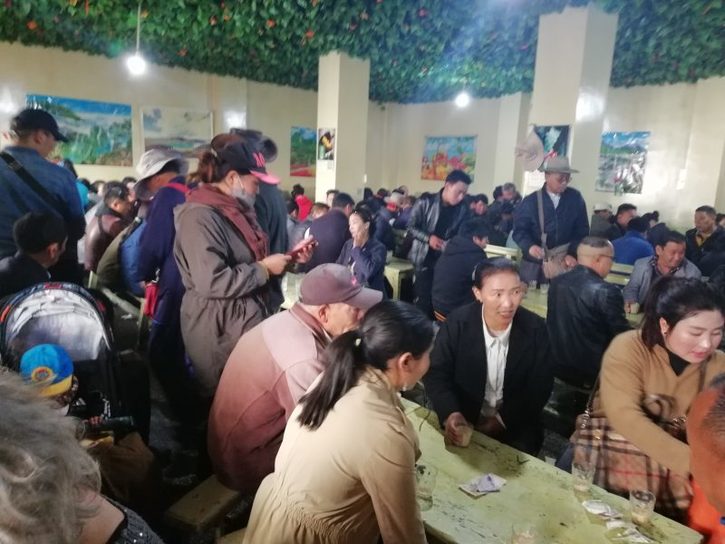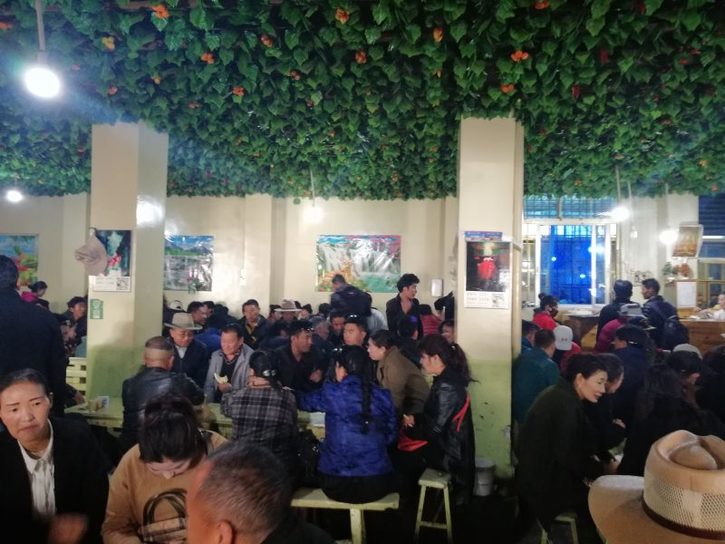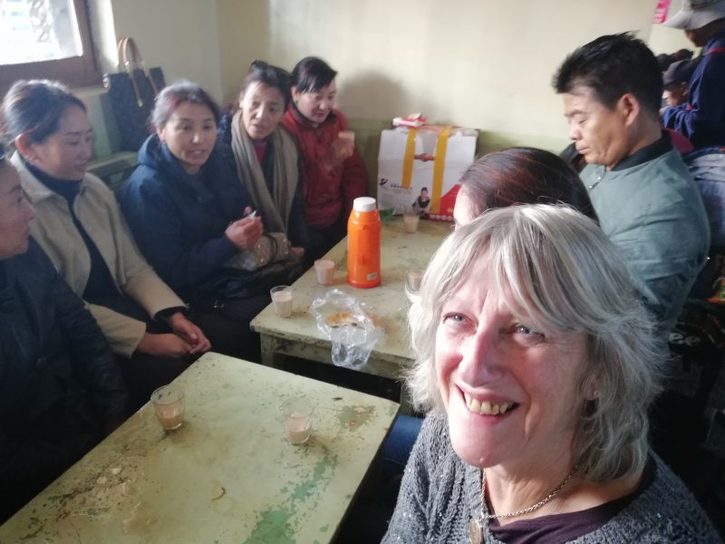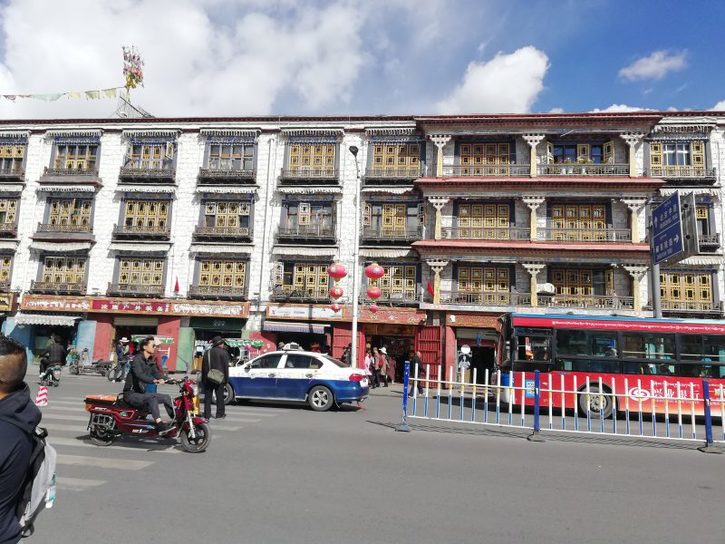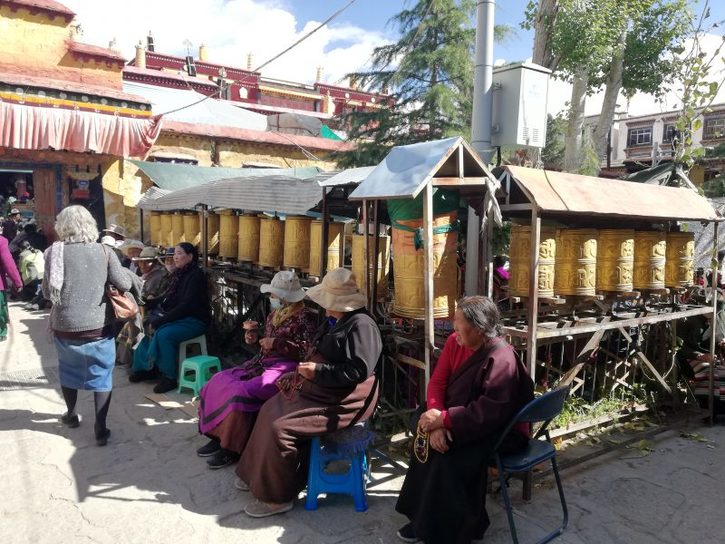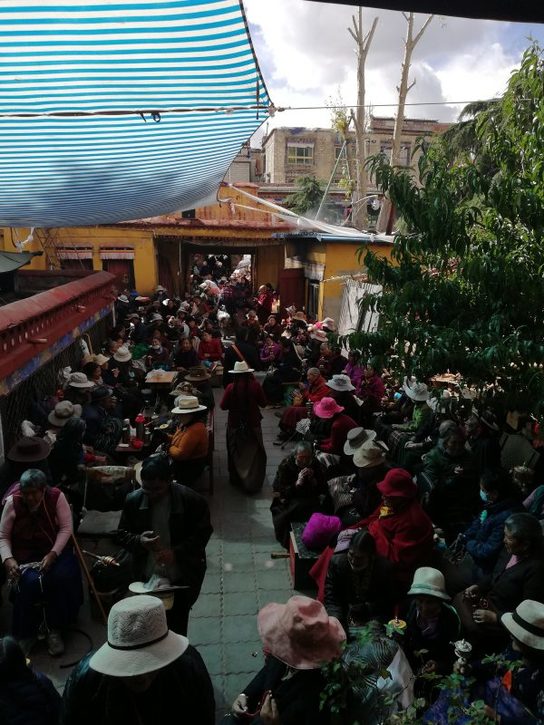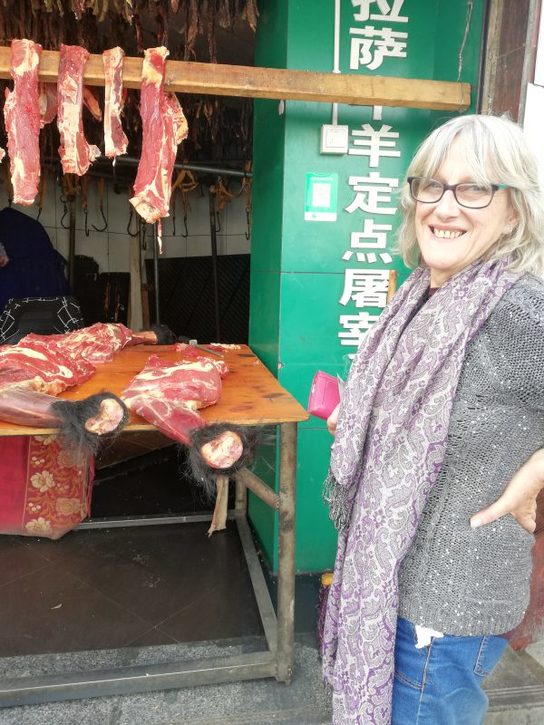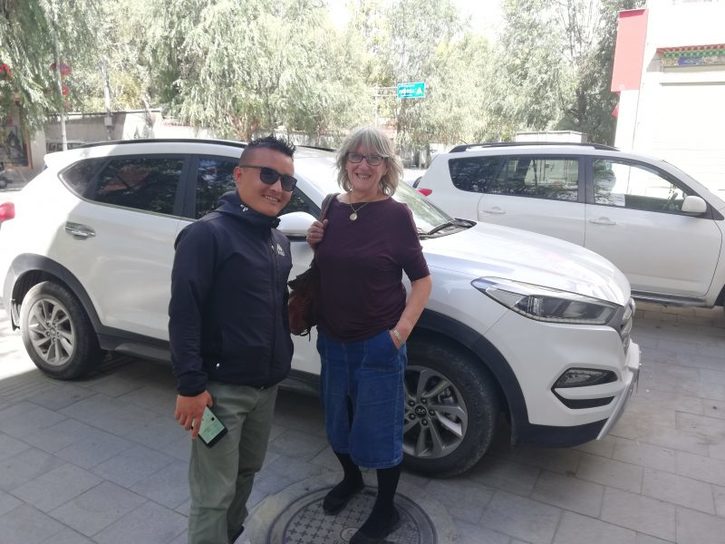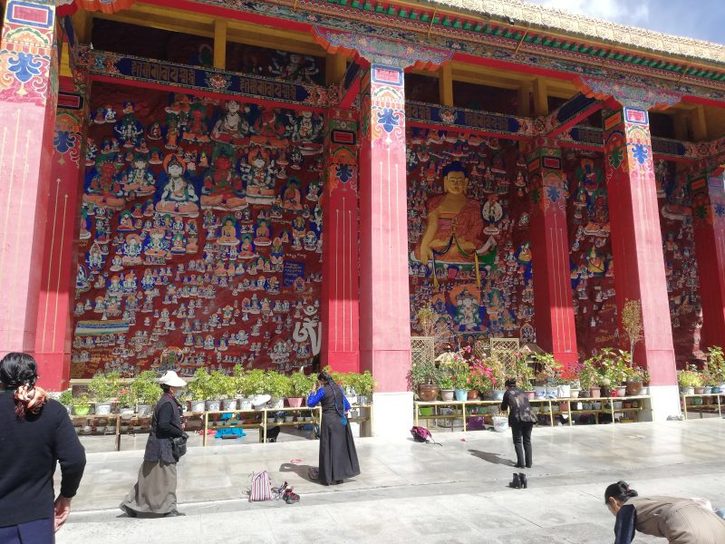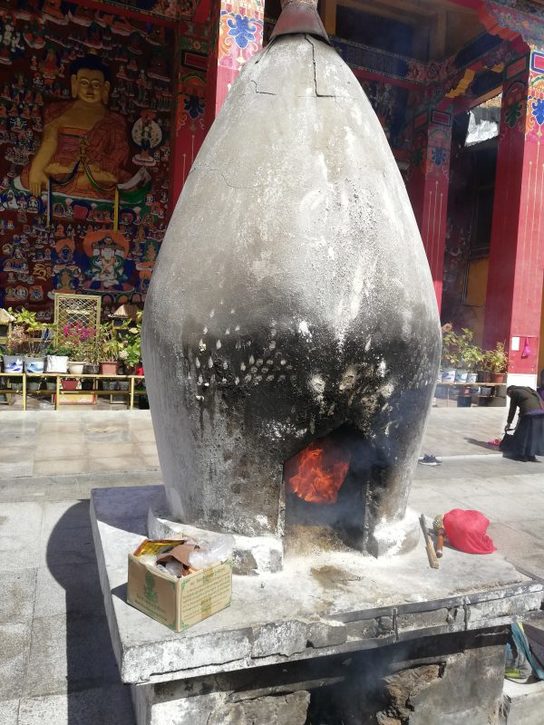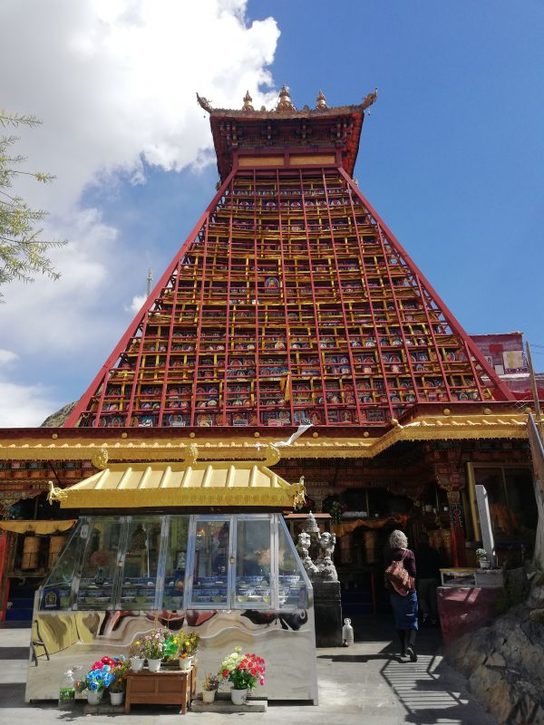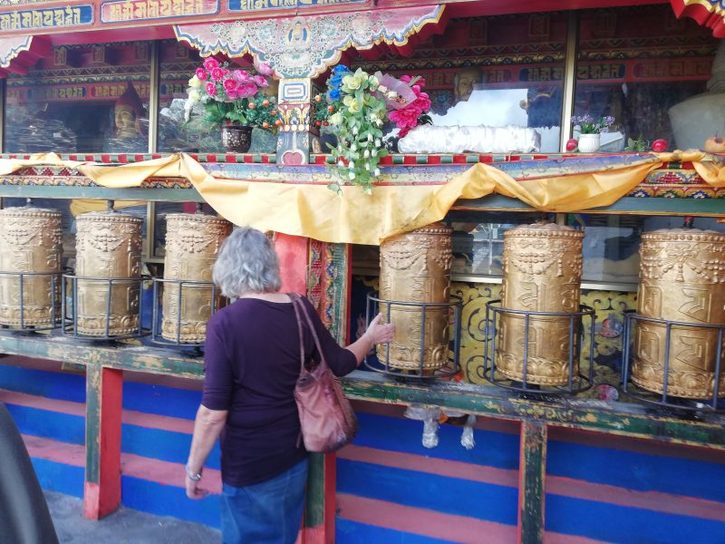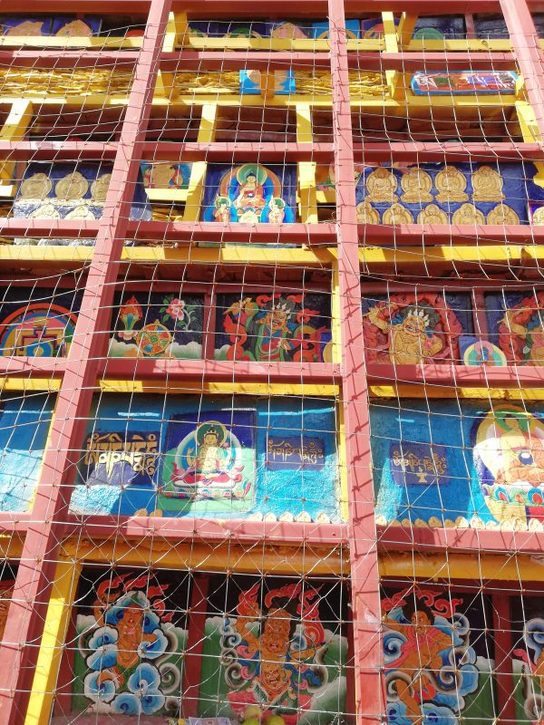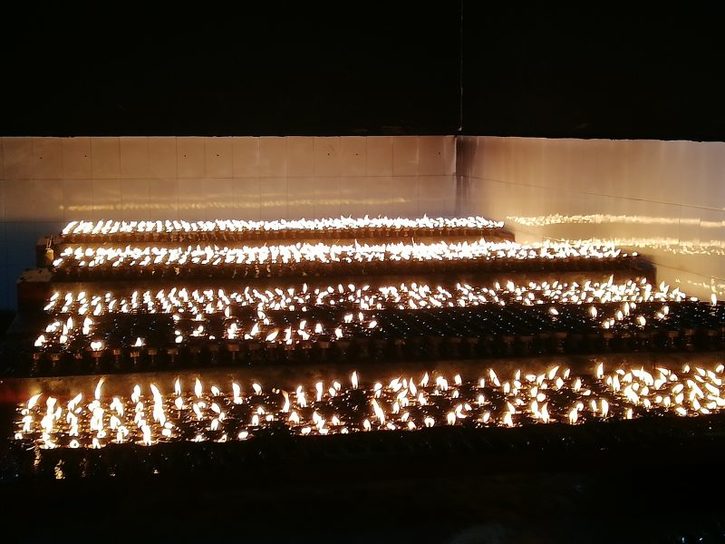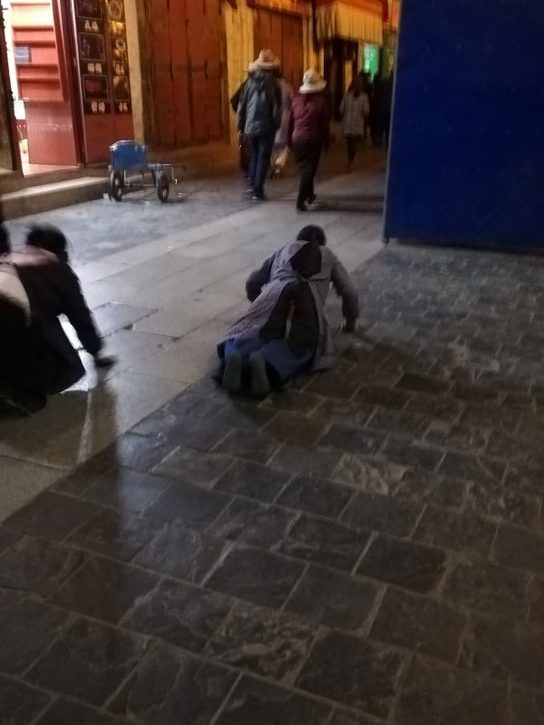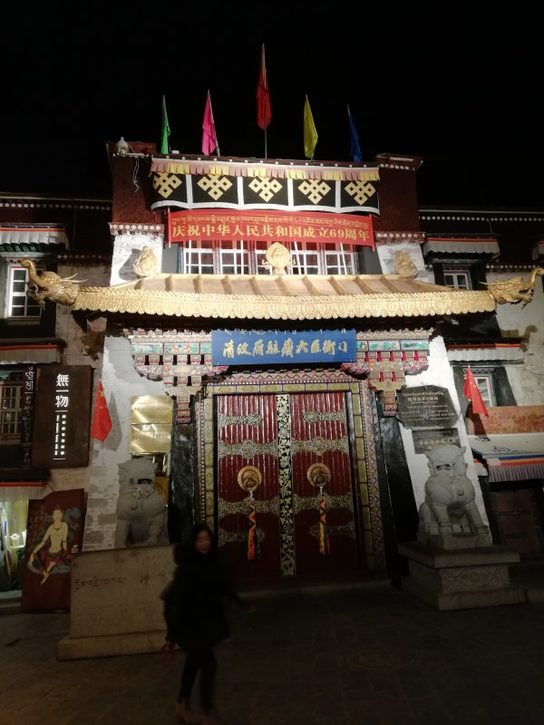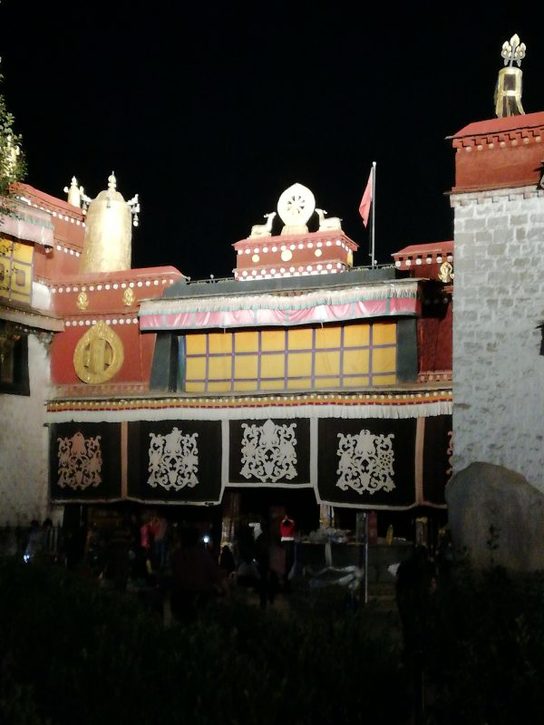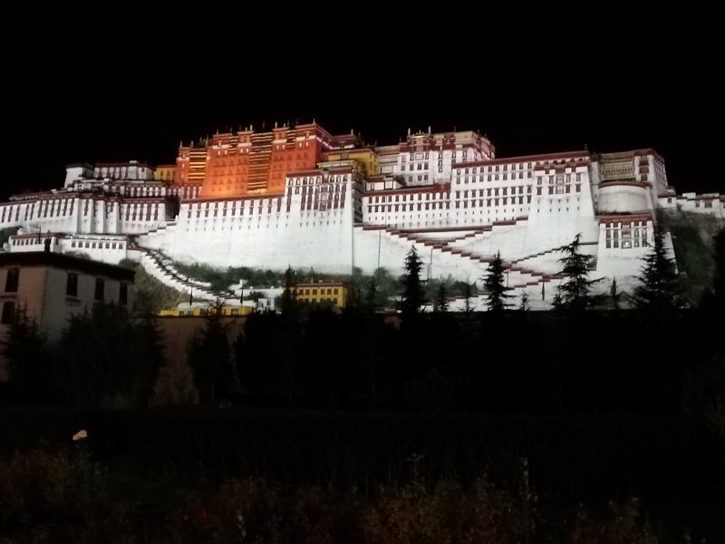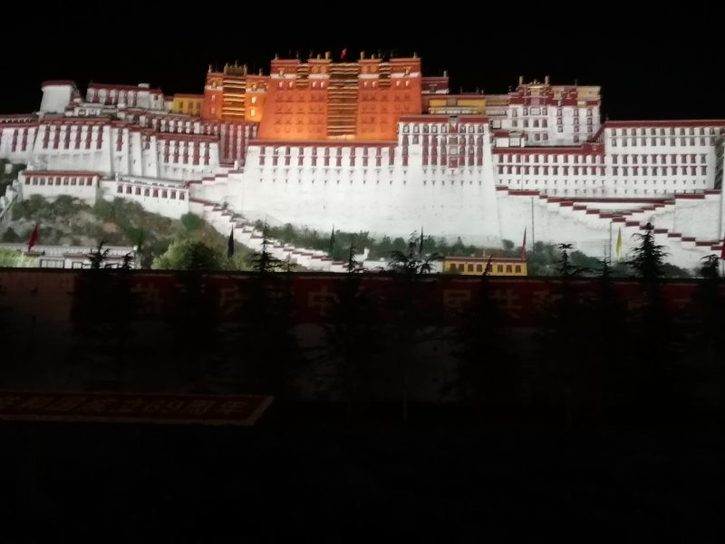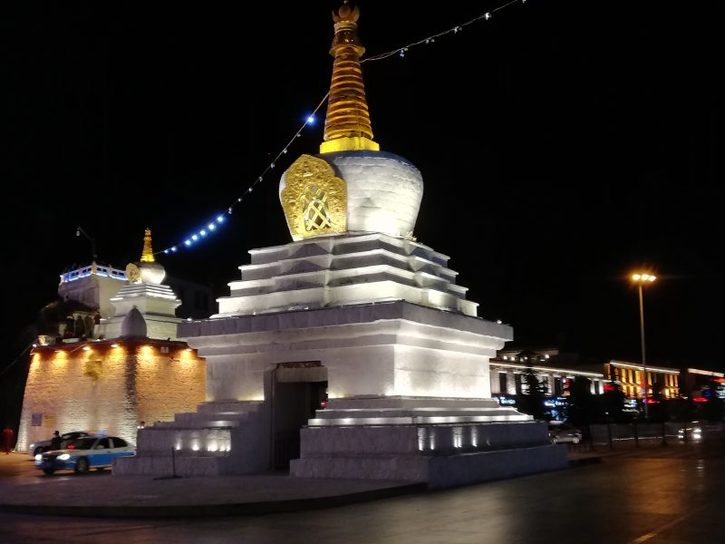Tensing took us in the morning to the Jokhang temple, which was built in 654 by King Songtsen Gampo, who had united Tibet and created a powerful military state. The temple complex is surrounded by the Barkhor, an octagonal path along which pilgrims prostrate themselves. On either side of the Barkhor there are shops selling tourist tat, much of which is said to be mass produced in India and Nepal. We reached the Barkhor down a side street and didn’t have to pass through the security gate at the entrance to the square in front of the Jokhang.
According to tradition, the Jokhang was built on a lake which the king tried to fill with earth, but the demons removed the earth every night. Eventually a goat carried the earth and the lake was successfully filled. Three statues of the Buddha were to be brought from India, Nepal and China, but only the statues from Nepal and China arrived with the king’s wives from those countries. The Chinese then wanted their statue (the Jowa Sakyamuni) back, so it was hidden in the Jokhang and we saw the room in which it had been hidden. It is the most revered image of the Buddha in Tibet, and a huge line of Tibetans queue patiently to stand before it. Not being Buddhists, we weren’t allowed to joint the queue so we stood at a distance to see it. In 2014, I was able to go onto the roof but it is now closed. In front of the temple there are stone furnaces into which pilgrims throw juniper branches and create smoke to feed the “Hungry Ghost”.
We then went to Lhasa’s favourite tea house in the street linking the Jokhang with the main Beijingzhong Road. It was crowded, but we found seats in a corner round a table with some atractive Tibetan girls who filled our cups with yak milk tea from a flask and gave us some bread. The waitress comes round every so often and fills the flask with new tea which costs 1 yuan (10 pence) a cup. Tensing met another tour guide who had been a monk.
Dinner was eaten at a momo house up three flights of stairs in a non-descript house along a side-street leading from the Jokhang complex. The momos (similar to dumplings filled with spicy yak or lamb meat) were delicious, especially when dipped in chili sauce. Tensing them took us to the Tsomoling temple, which is a place Western tourists don’t know about. I can’t find it on the internet. He told us that the people there are our age. I would say that 90% of them look at least 20 years older. They were twirling their hand-held prayer wheels of various shapes and sizes and listening to a rotund monk whose sermon was broadcast through booming loudspeakers. The place was packed out and we threaded our way through the worshippers, following a wizened little old lady who appeared to be doing a room-by-room tour of the temple and praying before each of the hundreds of images of the Buddha. It was an interesting and intensely spiritual experience but we were glad to get out. No photos were allowed in the temple.
Tensing then took us in his car to Sanggye Thongu, a place off the main road to the west of the western stupa where there was a massive painting said to have been first painted shortly after the building of the Jokhang, although obviously restored. Up a short hill there was a massive pyramid made of many thousands of scriptural texts.
We then went back to the van to chill out and in the evening went to a Nepalese restaurant where the meals were pleasant but rather small and over-priced. Jennifer was tired so I went alone back to Barkhor to do a kora (pilgrimage circuit) and followed hundreds of postrating pilgrims. Some were measuring their width, which involved stretching across the path and frequently bumping into those measuring their length. They then take a step sidewards and do its again. It must take them days to get round. I then went down the Beijing road to the beautiful floodlit Potala palace and took some pics before returning to the van for a good night’s kip.
